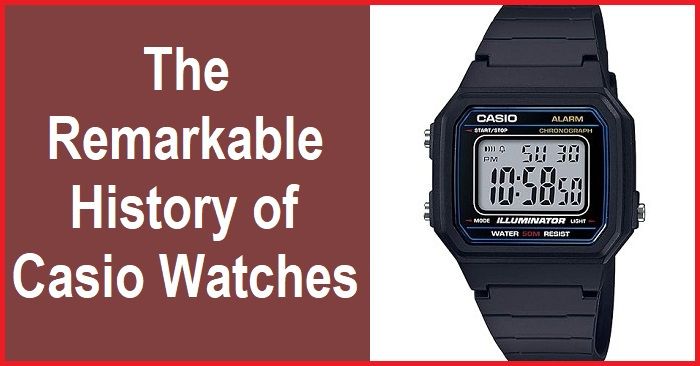As an Amazon Associate I earn from qualifying purchases.

Embark on a journey through the rich history of Casio watches. The brand is renowned for its commitment to innovation and precision. Casio introduced the world’s first electric calculator watch in the 1970s.
Since then, with the iconic G-Shock series, Casio has continuously pushed the boundaries of technology.
Discover the ideal fusion of fashion and practicality with Casio watches. These timepieces are a classic selection for both aficionados and those who set the latest trends.
History of Casio Watches
1946: Casio was founded in Japan by Tadao Kashio and his brothers. The company initially manufactured a range of items, such as calculators and cameras.
Casiotron (1974): In 1974, Casio entered the watch market. They released the Casiotron, one of the first watches with a digital display. This watch featured a quartz movement and a digital calendar. This set the stage for Casio’s future innovations in the watch industry.
If you are looking for an authentic Casio watch, you can check out our best casio watches of all time post.
G-Shock (1983): One of Casio’s most iconic and enduring lines, the G-Shock, was introduced in 1983. Engineer Kikuo Ibe designed the G-Shock. It was made to be a rugged, durable, and shock-resistant watch. It featured a triple-10 concept. It could withstand a 10-meter free-fall, had a 10-bar water resistance, and had a battery life of 10 years. The G-Shock quickly gained popularity for its toughness and became synonymous with durability.
F-91W (1991): The F-91W is a simple, affordable digital watch. It was released in 1991 and became widely popular. The F-91W remains one of Casio’s best-selling models. It is known for its reliability, long battery life, and low cost.
Baby-G (1994): The Baby-G series, launched in 1994, was a spin-off of the G-Shock line, catering to a female audience. These watches retained the durability of the G-Shock. They featured a more compact and stylish design.
Wave Ceptor (1999): Casio introduced the Wave Ceptor series, incorporating radio-controlled timekeeping technology. These watches synchronize with atomic clocks to maintain precise and accurate timekeeping.
Edifice (2000): Casio expanded its product range with the Edifice line. The company is targeting a more mature and sophisticated audience. Edifice watches often feature analog displays, advanced features, and a focus on style.
Smart Outdoor Watch (2016): Casio ventured into the smartwatch market with the release of the Smart Outdoor Watch. It is part of the PRO TREK series. It combines the ruggedness of a Casio watch with smart functionalities. These include GPS, environmental sensors, and smartphone connectivity.
Today: Casio is one of the world’s leading watchmakers, and its watches are popular with people of all ages and lifestyles.
Throughout its history, Casio has continued to innovate. It has adjusted to evolving consumer preferences. This has solidified its position as a leading brand in the watch industry. The company’s watches are known for their durability and reliability. They provide a wide range of features to accommodate a variety of needs and preferences.